It Starts With Health: Using Technology to Address the Primary Care Crisis


As the political season starts anew, a debate about larger economic and social priorities will inevitably surge. While there are undoubtedly numerous worthy issues, the overwhelming impact of healthcare is hard to ignore. Quite simply, it is nearly impossible to learn, build relationships or perform at your best when you don’t feel well. In other words, improving education, infrastructure or employment prospects are vitally important. However, deteriorating healthcare can quickly diminish any incremental benefits. Not feeling well—be it from an acute situation, a chronic condition or the side effects of an unhealthy lifestyle—will impact one’s ability to pay attention, exert full energy or have clarity of thought.
Irrespective of one’s political leanings as to what the government’s role in healthcare should or should not be, there is no disputing the exponential benefits that health has on every area of a person's life. As such, policies or products that address this issue translate into smart business. Winston Churchill crystalized it perfectly: “Healthy citizens are the greatest asset any country can have.”
When one thinks about a reduction in productivity, it is generally due to absenteeism, which encompasses conditions or injuries that warrant staying away from work and require a home or a hospital setting. While absenteeism is significant, it is only part of the problem.
A headache, infection, rash or back pain are among the common issues which cause enough of a distraction at work or school to compromise productivity. This makes sense given how easy it is to be distracted or irritable when you aren’t feeling well. This condition of being present but having limited performance due to health matters is referred to as "presenteeism."
The U.S. Centers for Disease Control and Prevention assert that the indirect costs of poor health—from absenteeism and presenteeism—may be several times higher than direct medical costs. They estimate that productivity losses related to personal and family health problems cost employers $225 billion annually.
It is more difficult to assess the economic impact that absenteeism and presenteeism has on education. Notwithstanding the inability to calculate an exact figure, there is most certainly universal agreement to the CDC’s summary of the linkage between health and education: “Healthy students are better learners.” It is easy to imagine an unwell grade-school student who has trouble concentrating, falls behind and spirals downward as a result of being unhealthy.
Healthcare covers a wide spectrum, from complex and serious illnesses and injuries to more mundane, temporary maladies. It is not realistic to easily eliminate or improve all aspects of healthcare, but substantial benefits can be accrued by simply addressing “low-hanging fruit.” For example, letting an upper respiratory infection linger unchecked extends its duration and increases its intensity, thereby adding to the negative impact of unhealthiness. This avoidable scenario is rectified by taking the proper antibiotics at the onset of feeling sub-par. It’s quite possible that treating the condition immediately reduces the sick days needed from five to just one or two.
To put this in perspective: Bronchitis costs an average of $898 per employee in lost annual productivity and is second only to cancer in cost. This means that shortening the duration and intensity of an upper respiratory infection translates directly to improving a business’ bottom line. Similarly, the application of basic regular physical therapy may render chronic lower back pain manageable.
Rather than trying to immediately improve all aspects of healthcare, a practical solution is to focus on the attainable: Prevent common diseases, treat conditions early before they escalate, regularly manage chronic conditions and motivate healthier lifestyles. Just focusing on these aspects of healthcare can have a meaningful benefit to educational and workplace productivity. For example, another CDC study concluded that seriously obese females (BMI >40) have a 141 percent increase in absenteeism compared to normal weight females. This amounts to almost an entire week of days missed and lost productivity.
There is a simple and straightforward way to improve health—by giving everyone access to high quality primary care. Primary care prevents, treats and manages common issues that, when aggregated, become daunting for a company or country to handle. For example, in the U.S. alone there are almost 100 millions visits to healthcare professionals for upper respiratory infections each year. The results of having early and frequent primary care visits are irrefutable in terms of reducing surgeries and other encounters that compound absenteeism and presenteeism.
Unfortunately, primary care has reached crisis levels in the U.S. and around the world over the last several decades. Notwithstanding the irrefutable benefits, there is a current and growing shortage of quality primary care doctors, which as a result has rendered early and frequent access unattainable for all but a small percentage of people. In sum, the decreasing supply of caregivers has been met with an increasing demand as the population is living longer with more chronic issues than ever before.
Ideally, healthcare should be corporate and government policymakers’ top priority, given that reducing absenteeism and presenteeism has direct, tangible and immediate benefits for all involved. That said, I believe the most practical solution is going to be driven by companies attempting to capitalize on the supply and demand mismatch in primary care. Aside from the individual and societal benefits, this is a serious problem in a massive market, so helping to solve the problem could generate substantial economic opportunities.
For companies with their sights set on the economic upside and the mission of making populations healthier, there are two distinct approaches to pursue. The first involves the repurposing of traditional brick and mortar drug stores to become convenient neighborhood healthcare clinics; and the second approach is to apply deep technology to primary care in order to drive efficiency, accessibility and quality. To me, the latter seems to have a better shot at solving the problem.
Healthcare in general—and primary care specifically—is one of the few places in modern life that has yet to truly experience the benefits afforded by technology. Technology enables today’s healthcare professionals to treat more patients in a limited time, whereas opening more quasi-clinics further exacerbates an already dwindling supply of healthcare professionals. Primary care should follow the path of retail banking, where transactions that were once only accomplished in a retail bank branch are now fully consummated anywhere using the latest in mobile technology.
Solving the primary care crisis creates a unique win/win opportunity: The companies that get it right will benefit, and so will patients, caregivers, employers, educators and, ultimately, taxpayers.
Image credit: Pexels
How Institutional Investors Can Harness the Solar Power Boom
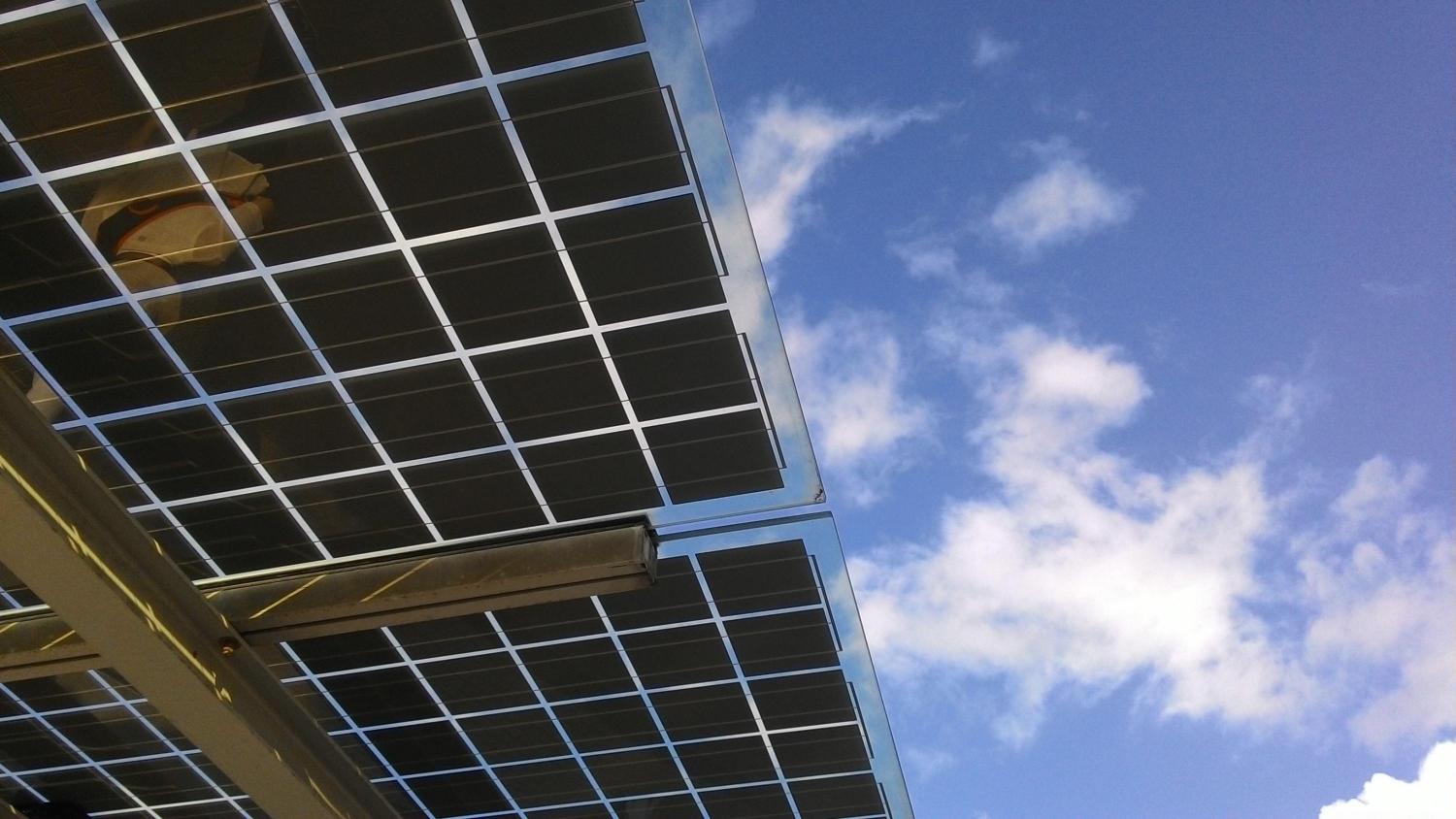

Over the past decade, demand for solar energy has skyrocketed in the United States and abroad – a trend that is expected to continue well into the 2020s. Despite the consistent growth of this transformative market, investment into the solar sector has been volatile and met with mixed results.
Solar stocks, for instance, have taken investors on a wild ride time and again. There are several reasons for this, such as uncertainty in tax incentives, global trade restrictions and supply gluts. But there has also been a common thread to these historically unpredictable investments. Most publicly listed solar companies manufacture solar energy equipment, and solar manufacturing is a hyper-competitive business where bankruptcies, exits and consolidations are the norm.
Institutional investors must balance stakeholder demands for more sustainable portfolios with the need for consistent returns over a long period of time. So, what are the best options? Turns out, investing in solar energy projects rather than technology and manufacturing can deliver on both fronts.
Solar energy projects are developed under long-term contracts in which an off-taker (i.e. a utility or corporation) agrees to buy the power produced by the system for a fixed period of time. Now that many projects have been in operation for a decade or more, we have a wide data set demonstrating that solar projects are low risk, both as a physical and financial asset.
Below, I’ve developed a guide for finding the right vehicle for investing in this growing asset class.
YieldCos
YieldCos are similar to traditional utilities in that they own and operate energy assets, including solar systems, and sell the power to end users. Owners of YieldCo shares receive dividends based on the revenue of these operating assets. They tend to carry significant debt loads that are long-term and locked into fixed rates. YieldCos have a larger parent or sponsor that maintains equity ownership interest, and as equity investors they have to compete with developers and fund owners that are also trying to buy solar projects. This approach bundles owned operating assets to create a stream of cash and are marketed as growth vehicles that are attractive to dividend-seekers.
After initially launching in 2013, investors in the first wave of YieldCos saw a significant market bust. But they’ve recovered more recently and investors should give YieldCos another look.
Master limited partnerships
This one is more aspirational, as IRS rules don’t currently allow solar projects to qualify under Master Limited Partnership rules. But Congress is considering bipartisan legislation to change this, with significant support from the solar industry’s trade association.
MLPs are tax-advantaged, publicly traded entities that are prime for investors looking for fixed income assets with comparatively high yields.
This financing model is common to oil and gas and other steady growth industries. Since 1987, Congress has largely limited the use of MLPs to real estate and natural resources, and 90 percent of income must be generated by qualifying activities related to these sectors. Unlike corporations that issue stock, MLPs do not retain earnings for growth but distribute them to investors as they become available. In general, MLPs are considered low-risk, long-term investments that help the energy sector decrease the cost of capital and provide slow but steady income streams.
Equity REITs
The renewable energy equity REIT invests in and owns real estate assets, just like a traditional equity REIT, but this model doesn’t fully support investments in solar projects due to previous IRS qualifications of solar panels providing an active function. Hannon Armstrong is the only REIT using the equity to finance sustainable infrastructure projects and invest in capital intensive projects like HVAC improvements in buildings, but the company’s ability to invest in solar projects is limited by the IRS rules.
Mortgage REITs
The mortgage REIT is only just now emerging as an opportunity to invest in solar projects a process I have been a part of as a co-founder of RadiantREIT. The mortgage REIT invests into a fund that offers liquidity for solar developers, meaning investors are competing with banks to finance existing project pipelines, rather than with developers to buy projects. This reduces the interest risk and creates capital for small to mid-sized developers, which in turn will continue to bolster industry growth and provide more investment opportunities and greater returns. The mortgage REIT model was designed specifically for turning long-term, low-interest, stable cash flows (like what a solar project produces) into a portfolio with returns that are attractive to the equity markets.
Green bonds
Globally, green bonds accounted for $161 billion in investments in 2017 and are used solely for climate and environmental projects. The green bond model comes with tax exemption and tax credit incentives and are sometimes referred to as climate bonds. sPower, a renewable energy power producer, offers a leading example. The company issued some of the first widely distributed, back-levered bond financing on tax equity partnerships. By closing $498.7 million in investment grade, private placement financing with approximately $425 million of medium-term bank loans in 2018, the company eliminated the refinancing risk associated with previous short-term bank loans.
More options than ever for investing in solar power projects
This brief guide is intended to provide you with a starting point in your solar energy investing research. Ultimately, it is important to recognize that you can participate in the booming industry without taking on the risk and volatility of solar equipment stocks. As the market continues to grow and evolve, institutional investors will seek investment vehicles that allow them to achieve their target yields. This inflow of capital will create a virtuous cycle in which cheap, abundant capital enters the solar market, enabling more growth and thus more investment opportunities.
Image credit: Asia Chang/Unsplash
Here Comes the Sun: Oakland Turns to Solar to Meet Peak Energy Demand


At moments of peak electricity demand, many cities and utilities operate power plants designed only to run for these times. Unfortunately, many of these “peakers,” as they’re often called, run on fossil fuels at much a higher cost per kilowatt-hour than base load power. In the case of Oakland, California, its peaking plant in Jack London Square burns jet fuel for electricity during surges in demand, which obviously isn’t good for the surrounding area’s air quality.
Now, Oakland is replacing the plant running on jet fuel with residential solar-plus-storage installations for low-income neighborhoods in West Oakland and elsewhere across the city. The contract with solar provider Sunrun for a virtual power plant with 500 kilowatts of capacity was approved on July 17 by the East Bay Community Energy (EBCE) board of directors, with operation planned by 2022. EBCE is a community-choice aggregator, buying power for the county at affordable prices.
A large battery system installed at what is currently the jet fuel-based plant will store electricity from the grid when demand is low and send this stored energy to the grid when demand rises. The electricity will first be available for low-income families living in nearby neighborhoods, and additional power will be stored in the batteries. Any excess electricity will then be distributed across the city’s general grid. The solar-plus-storage system, dubbed a virtual power plant, offers several major advantages:
- High grid efficiency and lower costs, which eliminates power loss associated with long-distance transmission
- No additional infrastructure, as in new power lines and generation plants, is required
- Better response time for ramping up and ramping down
- Black start capabilities, which restores power without requiring electricity from the grid, will be possible
- And in the long term, this system will provide residents with access to more clean power and resilience
Sunrun, widely considered to be a leading installer of U.S. residential solar systems, is on its way to becoming a leader in cloud-based, virtual power plants as well. The company signed a contract with ISO New England in 2019 to provide 20 megawatts of power capacity, using 5,000 home battery-plus-solar systems, by 2022. More recently in Southern California, Sunrun is planning to replace one of the three Los Angeles natural gas power plants scheduled for retirement with a similar system. About 75,000 homes would replace peak capacity at the existing plant, potentially saving $60 million.
Similar solar projects are being built around the world, mainly to address long-term resiliency issues. Tesla is working with the government of South Australia to fit 50,000 homes with solar panels to produce energy and using its battery system to store it, which will supply about 20 percent of the region’s energy requirements. In Japan, another California company called Autogrid is combining 10,000 distributed energy assets into one resource for what is considered the world’s largest behind-the-meter virtual power plant. Two hundred batteries will be installed, with other energy assets like solar and electric vehicle chargers being incorporated at a later date.
As extreme weather and other natural disasters continue to cause major power outages to the grid, Oakland’s virtual power plant, in addition to others around the world, will play a critical role in keeping the lights on. Not only that, but they will help cities and states move away from fossil fuels, help local governments meet their climate action goals and provide a cleaner, healthier and safer environment for their residents.
Image credits: Paul Stokstad/Wiki Commons; City of Oakland/Facebook
Executives Step Up To Pay Students' Meal Debt, But the District Says No


By now you've likely heard the latest rage-inducing news from my home state of Pennsylvania. But in case you haven't, here's a refresh: Earlier this month, a school district in Luzerne County—a high-poverty region tucked within the tourist-heavy Pocono Mountains—sent a letter home with students who have unpaid breakfast and lunch bills.
In the letter, school officials threatened to report parents to Dependency Court, where their children could be removed "and placed in foster care," if they failed to pay their meal debt. The letter sparked outcry on social media and prompted an outpouring of offers to settle the students' bills.
Among the would-be donors is La Colombe, a coffee roasting company founded in Philadelphia that now supplies coffee and operates cafes in cities like New York, Boston, Chicago, Los Angeles and Washington, D.C.
But here's where this story really gets strange: Todd Carmichael, co-founder and CEO of La Colombe, said his offer to pay the $22,000 in outstanding meal debt was rejected by the Wyoming Valley West School District.
"We talked to School Board President Joseph Mazur to determine the best way to transfer the funds in order to wipe the slate clean and restore dignity to the 1,000 families who received these threatening letters," Carmichael wrote in a letter obtained by NBC News. "Shockingly, Mr. Mazur turned us down. I can't explain or justify his actions. Let me be clear: we offered over $22,000 with no strings attached. And he said 'NO.'"
Carmichael, who received free lunches while at school, said he was "horrified" to learn of the letter and accused the district of "shaming" students whose families are struggling. But he wasn't the only one to step up.
Luzerne County Manager David Pedri, who condemned the district's letter as a scare tactic, told NPR that at least five donors have come forward with offers to pay the debt, including a "prominent media figure" who requested anonymity.
Arlan Hamilton, founder and managing partner of Backstage Capital, took her offer to Twitter, writing: “Excuse you?? I will pay $2,000 of the $20,000 debt. Please get in touch with me.”
Hamilton, who built her venture capital firm while homeless and now focuses her investments on startups led by people of color, women and LGBTQ people, also offered a more permanent solution involving fellow change-makers. “[Tiffani Ashley Bell] and [Kristy Tillman] I know at one point the three of us were talking about applying the Detroit Water Project method to school lunch debt. Is there anyone you know of who has it figured out?”
A bit of background for context: Bell and Tillman helped create the Detroit Water Project back in 2014, in response to news that residents of Flint, Michigan, were paying some of the highest rates in the nation for water tainted by lead. Now called the Human Utility, this grassroots nonprofit uses small donations to pay water bills for low-income households and has since reached more than 1,000 families in Detroit and Baltimore.
Hamilton isn't the only one with the idea to apply a similar model to pay off school lunch debt. In 2017, New York City-based writer Ashley C. Ford translated her disgust with "lunch shaming" into a call-to-action for her 66,000 Twitter followers, writing: “A cool thing you can do today is try to find out which of your local schools have kids with overdue lunch accounts and pay them off.”
Her challenge prompted people in communities across the country to start fundraising drives to settle lunch debt in their local districts. A campaign in Minnesota, for example, raised nearly $100,000, while the southwest Indiana city of Evansville brought in around $20,000, CBS News reported.
We're also seeing more action from the business community. Earlier this year, when a Rhode Island school district started giving cold meals to students who hadn't paid their lunch bills, yogurt company Chobani—an early investor in La Colombe—donated nearly $50,000 to settle the debt.
In an emotional video posted to Twitter, Chobani founder and CEO Hamdi Ulukaya insisted the donation must be a beginning, not an end. "We need to step up," he said. "We'll take care of this school's bill ... but we need everyone around the country to eliminate this [problem] for all." A month later, the company donated $85,000 to clear lunch debt at another district in Idaho.
And this spring Nikki Bailey, a mom from Monroe, Washington, founded the apparel brand Three Point Clothing with the sole purpose of paying down lunch debt in her local district—after news broke that unpaid bills could prevent graduating seniors from receiving their diplomas.
Though every little bit helps, some insiders say this is an issue of policy that donors can't address alone. “It’s unrealistic to think donations are going to fix this problem for school districts,” Diane Pratt-Heavner, spokeswoman for the School Nutrition Association, told CBS News. “It’s going to continue to be an issue until we get universal free meals for all students.”
Still, as the unfolding story in my state shows, it's impossible for donors to make a dent in this problem if school districts won't let them try. For years we've heard some segments of the public sector cry out for collaboration with companies and their executives. And as the brands taking stands movement shows no signs of slowing, they'd be wise to remember that—and to accept help from stakeholders looking to use their capital for good.
Image credits: U.S. Department of Agriculture/Flickr and Anna Auza/Unsplash
Can Cargo Ships Use Hydrogen Power to Become Carbon Neutral?


A high-speed passenger ferry running on hydrogen power is coming to San Francisco. Yes, the boat will give tourists a nice tour of the bay, but the purpose reaches further than that. The ultimate goal of the SF-BREEZE is to test the viability of hydrogen-fueled shipping vessels.
The design, from the size of the ship to the fuel cells onboard, is a prototype for future zero-emissions cargo ships. The ferry is expected to be finished this fall. When it is completed it will be the first hydrogen-powered maritime vessel operating in the United States.
“This kind of boat has never been built before,” said mechanical engineer Curt Leffers, the project manager for Elliott Bay Design Group, in a press statement. “Hydrogen fuel cells are heavier than diesel engines for a given power output, so achieving the right power-to-weight ratio for the vessel was tricky.”
The project comes at a time when cargo ships are being forced to cut their emissions. The International Maritime Organization (IMO), the branch of the United Nations that regulates global shipping, has created new rules for sulphur oxide emissions. Starting Jan. 1, 2020, the global sulphur cap will become 0.5 percent m/m (mass by mass). The current limit is 3.5 percent. Unfortunately, cleaner oil means more expensive oil, and fuel prices are widely projected to increase by 50 percent during 2020.
Despite the initial costs of shifting to alternative fuel sources, some shipping companies are making ambitious promises for a clean future. For example, the biggest container shipping company in the world, Maersk, pledged last year to become either carbon neutral or use 100 percent renewable energy by 2050, although how it will accomplish this is not yet completely clear.
"An easy way to become carbon neutral . . . would be to make not-very-smart business decisions," Ole Graa Jakobsen, Maersk’s head of fleet technology, told NPR. "Then we would very fast be out of operation and emit no carbon."
Currently, shipping fuel is not sustainable
So in general, what’s the big deal with the fuel cargo ships that are currently in use?
They are incredibly dirty.
The primary fuel used in maritime shipping since the 1960s has been heavy fuel oil, a byproduct of refining oil. Heavy fuel oil has historically been cheap, but it leaves a large health and environmental footprint. To give a visual: If global shipping were a country, it would be the sixth largest greenhouse gas emitter—sitting squarely between Germany and Japan.
Another concern with heavy fuel oil is sulphur oxide emissions, which, according to the IMO, are harmful to human health and the environment. Sulphur oxide can contribute to acid rain, which harms forests and crops and contributes to the acidification of the oceans.
In an attempt to decrease their carbon impact, some shipping companies have been diversifying their energy sources with solar panels and wind kites, and scrubbers have helped make ship exhaust cleaner by capturing 99 percent of sulphur emitted.
Lloyd’s Register projects that heavy fuel oil will still occupy 40 percent of fuel use by 2030 in its report, Global Marine Technology Trends 2030. Diversifying energy sources and increasing energy efficiency are effective ways to transition toward carbon neutrality until energy sources like hydrogen power become available at large scales.
Hydrogen power is a promising alternative
Hydrogen fuel cells work by combining hydrogen and oxygen atoms. While hydrogen has historically been sourced from natural gas, today this fuel is increasingly coming from renewable sources—namely, from "splitting" water molecules using an electric current.
In addition, hydrogen runs cleaner than conventional fuels because it leaves neither toxins nor waste behind—its only byproduct is water. Plus, these fuel cells are two to three times more efficient than engines that run on gasoline.
Cost-wise, would a cargo ship want to transition to hydrogen-power? Joe Pratt, who initiated the SF-BREEZE with his then-research partner, would say not yet. The fuel cell system is quite costly. Even the hydrogen ferry will cost around twice as much as a conventional diesel ferry.
“Right now, we can’t achieve economic parity with a comparable diesel ferry,” Pratt said in a 2016 press statement. “But this is a question we need to explore further. Is economic parity necessary from the outset? Lessons from the automotive market tell us maybe not.”
Electric vehicles have shown us that pioneers, or early adopters, need to acquire these new products at first to bring down prices for others.
Attention, Maersk! Here’s a chance to invest in a solution that just might get you to your 2050 goal and push you ahead of mounting regulations, limits and taxes on carbon. The rest of the shipping community is sure to follow your lead.
Image credit: Pixabay
Experts Say Sugar Is Becoming a Global Public Health Crisis
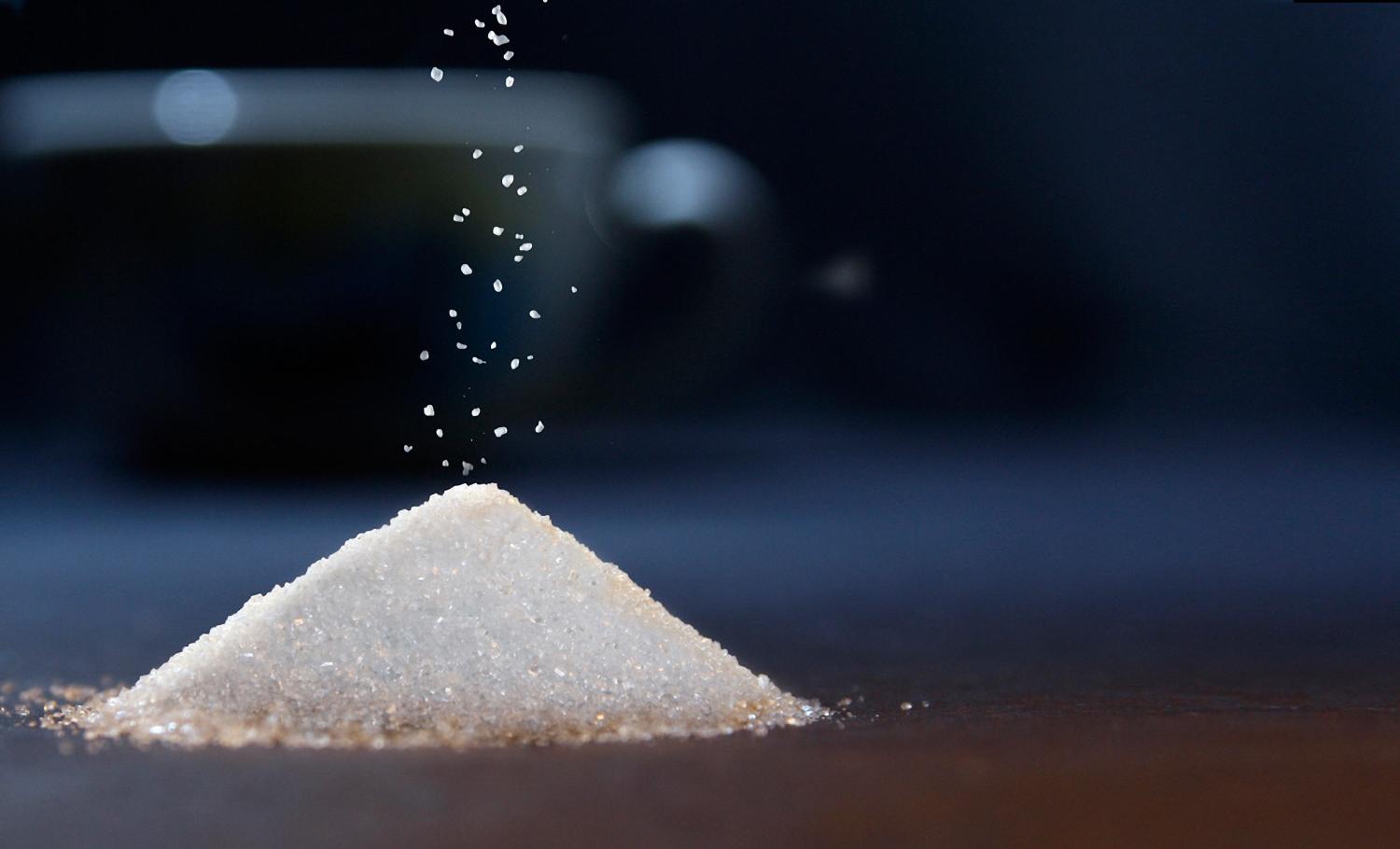
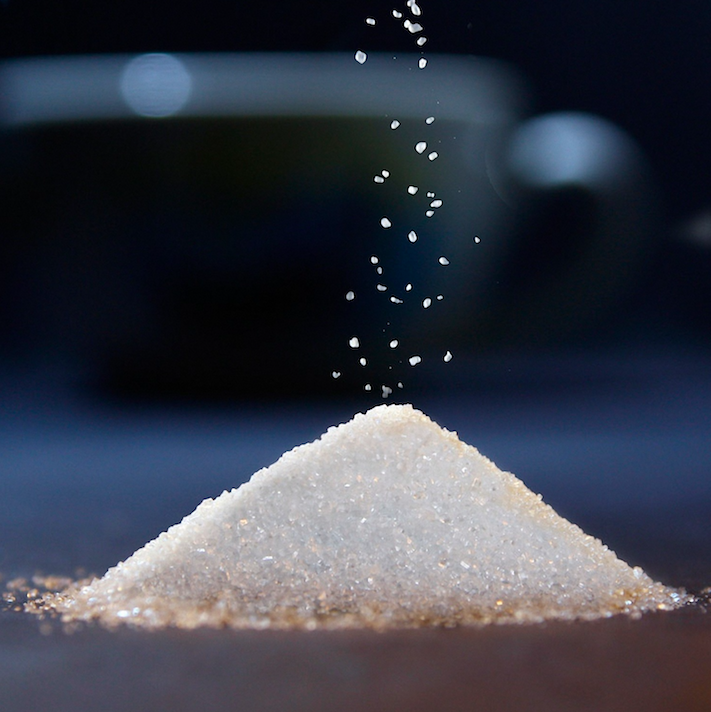
Sugar. Some public health experts say it can be as addictive as cocaine; increases the risk of cancer; is a chief cause of obesity, heart disease and diabetes; and is also key contributor to deteriorating oral health around the world. Yet, instead of working to reduce sugar consumption, critics say big brands including Coca-Cola and PepsiCo instead have been planning to increase marketing of sugary products in emerging markets, which some health experts say is potentially putting the health of millions at risk.
That’s according to a report by NPR that highlights the role of sugar in an emerging global cavities epidemic. The report’s authors referenced a recent study published in The Lancet Journal, in which researchers found that most dentistry focuses more on treatment than prevention.
“Many lose sight of the fact that sugar consumption remains the primary cause of disease development," said Professor Richard Watt, a chair in Dental Public Health at University College London, in a press statement. "We need tighter regulation and legislation to restrict marketing and influence of the [sugar industry], if we are to tackle the root causes of oral conditions."
While it is not often considered in the same category as the oil, pharmaceutical or tobacco industries, the sugar industry is a behemoth in its own right. It is a multibillion-dollar industry that is seeing significant growth and fighting tooth and nail to prevent public health officials from reducing sugar consumption.
Case in point: California. When cities including San Francisco, Berkeley and Oakland passed taxes on highly sweetened beverages—and saw consumption drop—sugar lobbyists went into action. Last year, they succeeded in getting an amendment added to the state budget that prohibited any other California cities from passing similar taxes until 2030.
“With a growing number of communities from coast to coast recognizing the health and economic benefits these taxes provide, the beverage industry is now resorting to backroom deals and underhanded efforts to preserve its profits,” said more than 20 health and justice nonprofits in a joint statement in response to the ban.
This follows a long trend of the sugar industry using tactics straight from the playbook of big oil and big tobacco to misinform the public when it comes to sugar-related health risks. More than 50 years ago, they were already paying scientists to produce industry-friendly research, and they played a role in the anti-fat diet fads of the 1990s and 2000s, shifting the blame of obesity to other food products.
In the past few years, though, a movement has emerged, led by nutrition scientists and doctors, to re-introduce science-based facts and stem the power of sugar. There’s increasing research linking sugar to a whole host of health issues, campaigns targeting the industry, and documentaries educating the public about sugar and the industry behind it.
There’s hope in California, too. Earlier this month, in response to the ban, the California Medical Association and the California Dental Association filed a 2020 ballot measure that would, if successful, implement a statewide tax on sugary drinks. While it's likely that the sugar industry will spend millions to try to prevent the bill’s passage, they tried that in the Bay Area and elsewhere where bans have been proposed and have mostly failed.
“California’s health care provider community is united behind ensuring that California voters have the opportunity to protect our children’s well-being—not the profit margins of soda conglomerates,” the initiative’s backers said in a press statement.
Global food and beverage companies should take note. Knowingly selling a product that harms public health is irresponsible. The tobacco industry did this for decades and paid dearly for it. Sugar is just as addictive, and potentially as harmful. It’s time for companies to cut back on sugar and sell healthier alternatives, and if they don’t do it themselves, voters and public officials may make them pay.
Image credit: Pixabay
Zara Reboots Its Strategy to Compete with Sustainable Apparel Brands


Fast fashion is polarizing. Younger shoppers are attracted by the low prices and chic looks, but they are also becoming more concerned about these apparel companies’ environmental and social impacts. To that end, Zara, a popular clothing chain that has recently faced its struggles attracting millennial and Gen Z shoppers, says it is making some changes.
Last week at its annual meeting, Inditex, the parent company of Zara, announced that the apparel manufacturer and retailer would ramp up its sustainability efforts. The chairman and CEO of Inditex, Pablo Isla, announced to a packed room of shareholders that 100 percent of the cotton, linen and polyester used by all eight of its brands will be organic, sustainable or recycled by 2025.
Zara, the most popular and visible of the company’s brands in many countries worldwide, plans to stop using synthetic fibers derived from fossil fuels in its clothing, accessories, and shoes globally. This is a substantial commitment from one of the biggest companies in the retail business today that is projected to continue growth in revenues, but is facing setbacks in some markets.
Depending on the source cited, Inditex is the second- or third-largest apparel retailer in the world, and it has set this aggressive new target in part because of the reality the fast fashion industry is facing. There is no shortage of critics who say no matter what a fast fashion company like Inditex, H&M, C&A or Uniqlo does, these companies can never be “sustainable.” Nevertheless, the reality is that companies are faced with two consumer demands that are tough to merge: fashionable yet sustainable clothes . . . that are competitively priced.
Fast fashion companies have tried to respond in kind, but part of their challenge is their sprawling, complicated supply chains. H&M has strived to be “climate positive,” for example, and Zara made a commitment to be “toxic free” by 2020. Both brands have had their struggles with labor problems in their supply chains and volatile social issues as well.
Past criticisms aside, Indetix is charging forward with its sustainability agenda. Isla highlighted the fact that “the culture of diversity, innovation, and creativity that is shared by the entire Inditex team is driving the forward-looking values of sustainability and innovation.”
Along with its aggressive target around clothing production, Indetix has set new goals around the operation side of the business as well. The company says it will fully eliminate plastic bags at all of its stores by next year, a milestone already reached with its brands Zara, Zara Home, Massimo Dutti and Uterqüe. By 2023, the company is planning to eliminate all single-use plastics for customer sales.
The sustainable fashion movement is growing, and given consumer trends, will be here to stay. Zara’s competitors and other fast fashion giants, such as H&M, continue to come out with similar commitments. However, smaller, newer fashion companies such as Everlane and Reformation have been built from the ground up with sustainability in mind. Younger companies will continue to challenge large fashion retail brands. Meanwhile, Isla says Inditex will continue to shift its focus to sustainable transformation as a way to promote growth. “Sustainability is a never-ending task in which everyone here at Inditex is involved,” he noted.
Image credit: Mike Mozart/Flickr
ENGIE’s Climate Action Toolkit Could Boost the Low-Carbon Economy
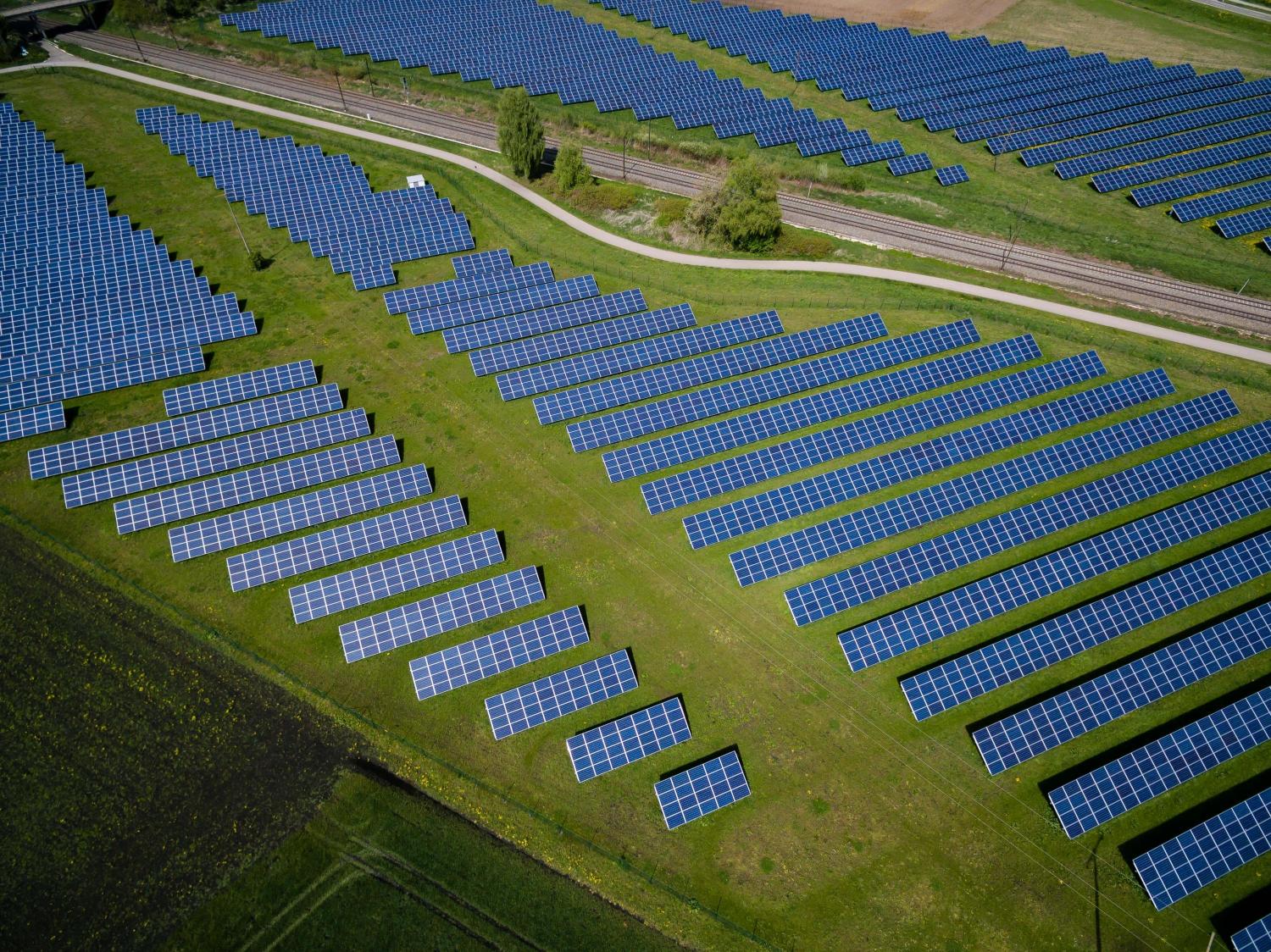
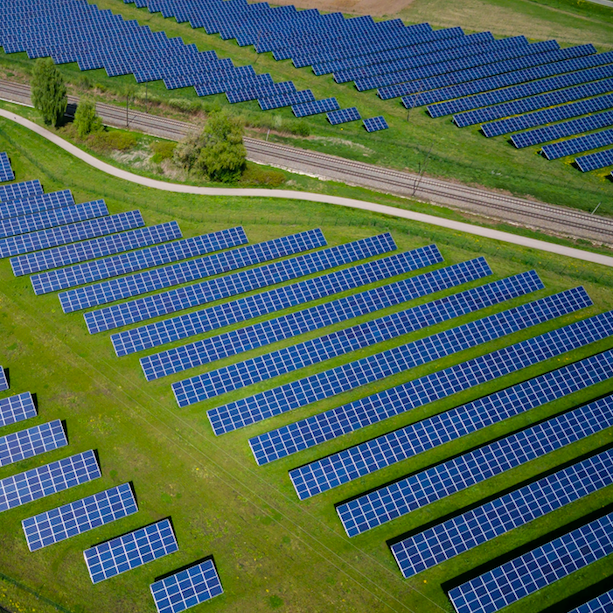
For many Fortune 500 companies that have made serious climate action commitments in line with the 2015 Paris Agreement, reality is sinking in. Many are faced with a looming gap between intention and action. They are not on track to meet their commitments. Clearly, something is missing.
The leading European energy company ENGIE believes it has the missing link in hand. Until recently, ENGIE’s portfolio was burdened with coal power plants. But the company has since made an almost complete transition into renewables, natural gas and related services. The next logical step for ENGIE is to leverage that experience and grow its business by guiding others on a low-carbon journey.
A new climate change toolkit
ENGIE has placed its climate advisory services under the umbrella of its newly formed ENGIE Impact consulting firm. The move brings together several existing branches of the company: ENGIE Insight (formerly Ecova), Ecova U.K., Red Engineering, and the Advisory and Advanced Analytics division of Tractebel, a leading offshore solar panel company.
Through the new firm, ENGIE aims to provide clients in business and government with a holistic approach to achieving their zero-carbon goals.
The key element will be ENGIE Impact’s ability to sort through the challenges faced by businesses and governments, identify opportunities to avoid risk, and achieve direct bottom-line benefits.
The potential for global impact
On the private-sector side, ENGIE Impact will focus on working with high-level executives. That approach is consistent with the experience of the green investor group Ceres and other climate advocacy organizations. These groups find that rapid, efficient climate action in the private sector requires direction from the highest levels.
On the government side, ENGIE Impact is focusing on local governments. That may seem counterintuitive in terms of global impact, but a glance at the situation in countries like the U.S. demonstrates why a decentralized approach can be more effective.
In the U.S., hundreds of mayors have partnered with the business community to take the lead on reducing greenhouse gas emissions. Hundreds of cities have set climate goals and continue to advocate for action. In contrast, many state-level policymakers are pushing back on climate action. And of course, U.S. President Donald Trump in 2017 began the process of pulling the entire nation out of the Paris Agreement, though the U.S. Department of Energy continues to support renewable energy initiatives.
Room for opportunity
ENGIE still has substantial interests in natural gas. However, if all goes according to plan, ENGIE Impact will enable the company to grow its opportunities in the energy services field, even as the global economy decarbonizes.
Just four years ago, coal accounted for 13 percent of ENGIE’s global power generation capacity. In 2015, the company pledged to reduce and eventually eliminate its coal portfolio. That number is already down to 4 percent as of April, when the company sold major coal assets in the Netherlands and Germany.
While coal opportunities are shrinking, the openings for energy services are growing. ENGIE Impact already has more than 1 million sites globally in its portfolio, distributed among 1,000 clients.
Many of those clients are Fortune 500 companies. That connection to the world’s top-performing firms provides ENGIE Impact with a window into the challenges faced by some of the world’s leading carbon emitters.
In a press release announcing the formation of the new consulting firm, ENGIE took note of a recent study by the firm Carbon Delta, which assessed the ability of the world’s top 500 companies (rated by market capitalization) to meet climate goals under the Paris Agreement.
Rather than calculating the impact of the companies’ public pledges, the report compares their current carbon emissions to their current portfolio of low-carbon patents.
The results indicate why ENGIE perceives a significant opportunity for growth. The Financial Times crunched the numbers and found that only 15 percent of the Fortune 500 is on track to meet the goals of the Paris Agreement.
The ripple effect of climate action
Though ENGIE still has a foothold in fossil fuels through its gas business, the company is increasing its renewable gas portfolio as part of its decarbonization plan. ENGIE also began introducing renewable hydrogen into its portfolio last year.
Getting other energy companies to climb on board the low-carbon economy is another matter. Demand for electricity is rising, providing new opportunities for fossil fuel stakeholders. Some are beginning to accelerate their transition into renewable energy, but as a group fossil energy companies still play an outsized role in global carbon emissions.
In 2017 the nonprofit organization CDP (formerly the Carbon Disclosure Project) ran the numbers and concluded that more than 71 percent of the world’s carbon emissions can be traced to just 100 fossil extracting companies.
Additionally, CDP found that only 25 fossil energy firms and government organizations have been responsible for more than half of the world’s greenhouse gas emissions produced after 1988. CDP explains the 1988 milepost as the point at which “fossil fuel companies knew, or should have known, of the destabilizing effects of their products on the environment.”
Whether or not the world’s leading carbon emitters do business with ENGIE Impact, their fossil fuel-driven opportunities will begin to shrink as consulting firms like ENGIE Impact enable energy consumers to find sustainable alternatives that yield bottom-line benefits.
Image credit: Andreas Gücklhorn/Unsplash
Tiny Apartments Gain Traction in Latin America: How Small Can They Go?
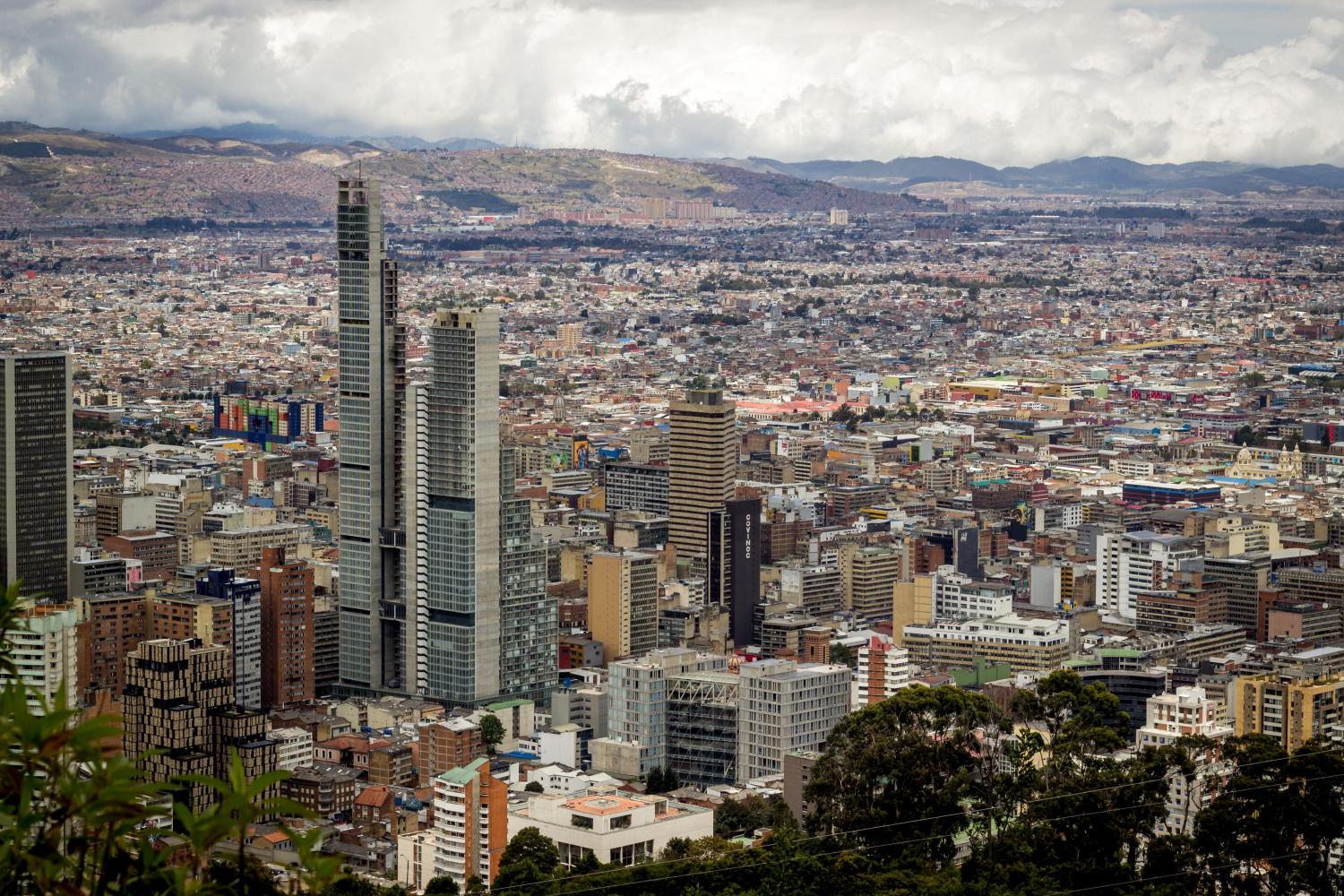
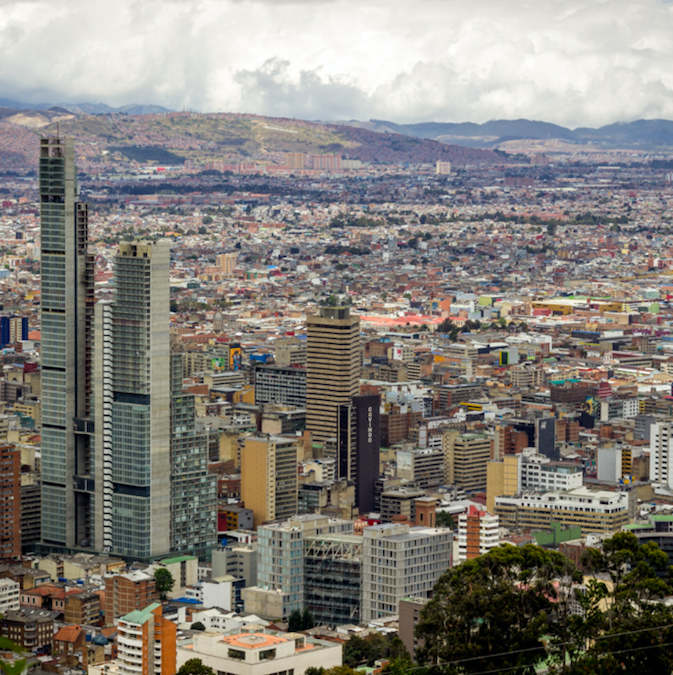
With workers in major Latin American cities stuck in grueling three-hour commutes and hamstrung by unaffordable housing options, architects are turning to a big idea: small housing—really small housing. The introduction of micro-apartments—as small as 10 square meters, a size comparable to a parking space—are the latest trend to hit cities like Sao Paolo, Bogota (pictured above), Mexico City and Buenos Aires, cities where a swelling population has not been kind to students and young professionals looking for affordable living options.
While critics are labeling the apartments and similar approaches to housing like California’s Podshare as prison-like, others are promoting these ideas as an innovative way to respond to the growing demand for affordable housing. Through co-living spaces including kitchens, dining rooms, movie theaters, gyms and lounges, architects are finding ways to attract a younger generation of renters. These renters sleep in their tiny apartments, but that’s about it, said Alexandre Frankel, executive director of a development firm building micro-apartments in Sao Paulo.
“People sleep in their apartments, but the rest of the building is theirs, too,” Frankel told BBC Mundo.
Micro-apartments aren’t a new phenomenon. In Japan, where rent and population density rank among the highest in the world, there are apartments as small as 8 square meters. The trend is also underway in pricey London. Nevertheless, the development of these micro-apartments in Latin America is pushing the boundary to a new level there. Sao Paulo’s government responded to the trend with new regulations limiting the size of new apartments to 11 square meters. Frankel said he would make the apartments even smaller if he could.
Argentina’s government approved the building of micro-apartments a few months ago, the BBC reported. The construction of these mini homes is expected to proliferate there, though most of the city's apartments do not dip below 20 square meters.
The trend hasn’t quite spread to Mexico City, where residents aren’t showing much interest in living in an apartment smaller than 65 square meters. But in a city where the growth rate is among the highest in the world, it may not be long before residents opt to swap space for practicality.
Are micro-apartments and tiny homes here to stay, or rather a short-term solution for a more enduring housing problem?
Experts tend to view micro-housing as a temporary stopgap while the private sector, government and policymakers grapple with how to approach more longstanding issues in the housing market. Living in a cramped space some compare to a prison cell may also have lasting psychological effects, experts say. Communal spaces like the ones Frankel is envisioning for his firm’s future micro-projects may curb this concern. And in far-off cities like Auckland, New Zealand, local officials are looking to this trend in Latin America for inspiration on how to tackle their own local affordable housing crises.
Micro-housing may not be the silver bullet to solving the housing crisis, but it can be used as a crucial strategy to complement more long-lasting improvements, like increased public housing and better transportation systems to mitigate traffic and unlock easy city access for more rural dwellers.
There is no one-size-fits-all solution to the housing crisis. Singapore and Hong Kong, for example, require unique solutions to their overcrowded cities—their small landmass doesn’t provide them the luxury of building further into the countryside. Instead they build higher and higher. Hong Kong tops the world ranking for city with the most skyscrapers, with nearly 75 percent of them being residential buildings. Cities in Latin America, however, have a little more leeway. Investments in strong transportation systems in these cities can more easily connect suburbs to downtown, reducing traffic woes and decreasing greenhouse gas emissions from cars along the way.
The market, above all, will dictate the immediate future of micro-housing. If young professionals and college students are willing to downsize for the right price, then architects and developers will jump on the idea of mass producing these parking-space-sized homes. Investors, too, want a piece of the action—they see high profitability in buying these homes on the cheap and renting them out to tourists paying premium prices for daily and weekly rentals.
Image credit: Michael Lechner/Unsplash
This Silicon Valley Program Boosts Social Entrepreneurship
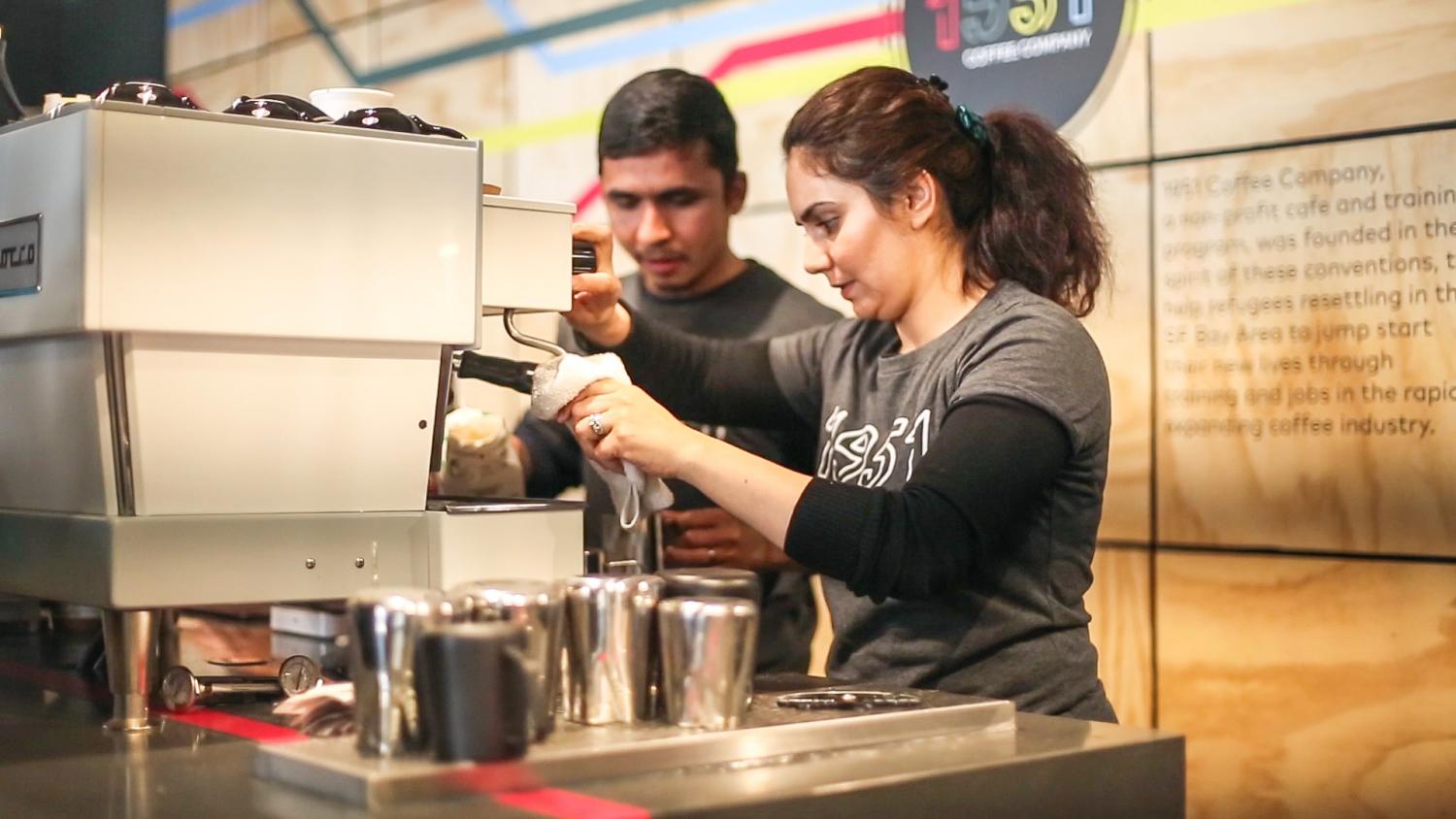
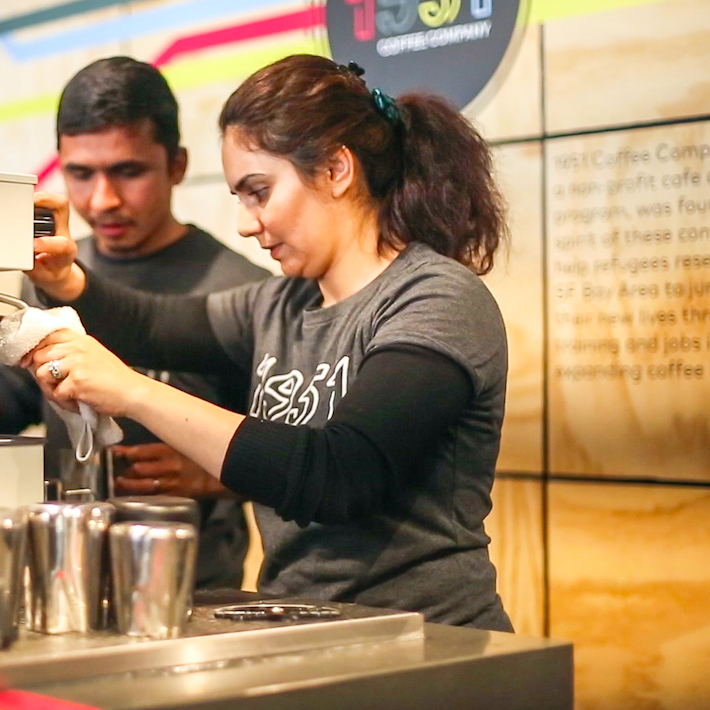
Far too many people worldwide are living on the margins, as through no control of their own they have been displaced from communities they once called home. Social entrepreneurship can help address this challenge in various ways. The Miller Center for Social Entrepreneurship at Santa Clara University is helping with this effort through its Social Entrepreneurship at the Margins (SEM) program. Established in 2018 and funded by philanthropic organizations and individual donors, the six-month online accelerator was designed to sharpen social entrepreneurs’ business plans, while improving investment readiness in their ideas.
Such programs are critical as the world is facing a huge refugee and immigrant crisis:
- Globally, there are 68.5 million people forcibly displaced from their homes and 25.5 million of those are refugees, according to the United Nations Refugee Agency.
- The World Health Organization estimated that there were a record 258 million migrants in 2017.
“Our experience and track record led us to believe that entrepreneurial approaches to helping those in need might have potential to scale,” said Thane Kreiner, executive director of Miller Center. Since 2003, the organization says it has accelerated more than 1,000 social enterprises, positively impacting more than 380 million people in 100 countries.
Mentoring social entrepreneurship leaders can pay dividends
Executive-level Silicon Valley mentors accompanied the 18 organizations chosen for SEM 2018 through six months of online learning, including topics such as business models, unit economics, impact models and growth strategies. In addition to sharing their knowledge and expertise, the mentors also learned more about issues facing migrants, refugees and other citizens confronting similar conditions. The mentors brought this knowledge back to their Silicon Valley entrepreneurial ecosystem, which helped increase awareness of these marginalized citizens.
Rachel Taber, a 2018 SEM participant and cofounder of 1951 Coffee Company, says the mentorship was her favorite part of the program. She worked with Louis Jordan, formerly global senior vice president of finance at Starbucks, on 1951’s financials. “Because he understood the coffee and retail business, he was able to analyze our current operations, suggest options to streamline, and help us figure out efficient ways to scale,” Taber said.
Brewing up better jobs
Taber and cofounder Doug Hewitt started 1951 Coffee after seeing firsthand the barriers refugees faced in finding dignified employment that pays a living wage. “1951 was borne out of equal part inspiration—of what was possible—and frustration—of deep needs not being met that resulted in a refugee’s long-term isolation and poverty,” the cofounders told TriplePundit.
In response, 1951 Coffee provides refugees with an intensive two-week hard and soft skills training program so they can find quality jobs as quickly as possible. 1851 also provides follow-up support, including mock interviews and one-on-one coaching with employers.
But running such an operation isn’t easy because other leaders in the business world don’t necessarily understand what social entrepreneurship is all about, leading to feelings of frustration and isolation. The SEM program provided networking with others of similar mindset. “No one understood what we were doing and how we were trying to do it,” Taber explained. “SEM connected us to others in our exact same position and helped us define and share our model.”
Workshops can help new ventures win more funding
The SEM 2018 accelerator concluded with a five-day in-residence workshop highlighted by a showcase event in San Francisco, where each participant shared a six-minute overview of their work. Participants also had an opportunity to meet potential partners and investors past events held by Social Capital Markets.
This in-residence training proved quite valuable to 1951 Coffee’s showcase presentation. "The Miller Center brought in an expert to help us with storytelling and how to create the most engaging pitch,” Taber explained. The result was a $200,000 commitment from the Chao Foundation to open an outpost of 1951 in the San Jose area.
“The entire [SEM] program gave us the knowledge and tools to confidently approach any funder with a strong business plan, financials and due diligence information,” Taber added.
Accelerating good must continue
The SEM 2018 program resulted in raising $11 million of investment and a positive impact on 80,000 lives, said Kreiner of the Miller Center. With such success, the Center is offering a second accelerator, SEM 2 Online, another six-month program offered at no charge to participants.
As social enterprises become more business-capable and investment-ready, they can also scale up their impact, Kreiner told us. Programs like SEM can help, but they require a similar level of investment and commitment so that social entrepreneurs have the tools they need to address the challenges faced by the millions of marginalized people worldwide.
Image credit: 1951 Coffee